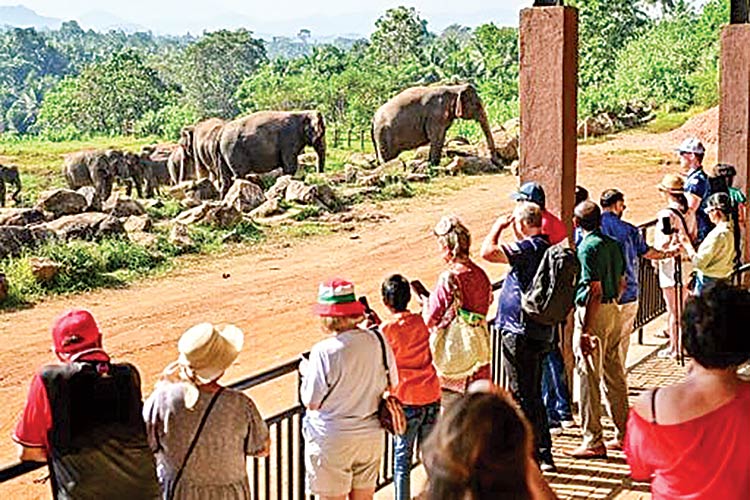Life style
The art of growing bald gracefully

There are three important days in every bald(ing) man’s life: The day you realize you’re losing your hair, the day you realize you should shave off what remains, and the day you finally do. Growing bald gracefully is about reducing the gap between these milestones as far as possible. I learned this the hard way.
Before recounting my decade of denial and deceit, here are the bare-headed facts: I suffer from a type of baldness I call “the Prince William.” It combines an expanding circular patch on top (“the Friar Tuck”) and receding corners (“the Jude Law”). The two must eventually meet. Or, to put it another way: The bridge between my last strongholds of follicle activity has grown ever thinner, my hairline drifting apart like two continental landmasses. What once resembled Pangaea is now little more than a footbridge over the Bering Strait.
My mother was the first to notice this tectonic shift. “You’re thinning,” she observed, hovering over my then-25-year-old self at the family table. It seemed fitting that the woman who delivered me into this world should also discover my first sign of aging. After all, losing your hair is coming to terms with the possibility of looking like a big baby again. (Although my mom recently confirmed via WhatsApp that I had a full head of hair at birth. “I don’t do bald babies,” she added, unhelpfully.)
What followed will be familiar to men around the world. Realization is a creeping process of denial eroded by moments of shock and, later, resignation. Denial was believing that what wasn’t in the mirror (namely a birds-eye view of my head) didn’t exist. Shock was encountering a photo of myself, taken from above, and wondering, ‘Who’s that balding guy standing exactly where I was?’ Resignation was seeing an acquaintance across a bar, his greasy comb-over fooling only himself, and muttering to my wife: “Just don’t let me get like him.”
I almost did. Another five years would pass until I conceded defeat. I moved to Hong Kong and found a miracle barber who proved that coolness isn’t a hairstyle alone. A budding breakdancer (and bald by choice: hair is something of an impediment to head-spinning), he was adept at arranging my remaining locks in a way that maintained the illusion.
We had an unspoken understanding. But when I moved again last year, my attempts to explain his magic to new hair stylists became increasingly embarrassing. It felt like I was making them accomplices in my deception. “Just make it look… better?” I’d say, before removing my glasses and hoping what emerged would sustain me for another month or three. Successive barbers played along. But I, too, was fooling only myself.
Instagram’s algorithms discovered my situation and began populating my feed with clips of extreme toupée makeovers. Hints from loved ones were even less subtle — like when my wife returned from a work trip brandishing a gift, only to reveal a bottle of UV-protective scalp spray. Who said romance is dead?
In the meantime, I began making self-deprecating jokes and became more comfortable discussing my fate. Invariably, friends offered the same three condolences in reply: 1) That “at least” I can grow a beard, 2) that I have a “good-shaped head,” whatever that means, and 3) that, if I’m lucky, I might end up resembling the universal gold standard of attractive bald White dudes: Bruce Willis.
If you find yourself reassuring a balding man that he looks like Bruce Willis, I promise you he’s heard it many times before. It is reassuring, nonetheless.
‘Welcome to the sexy zone’
As your hair thins, small clumps start sticking out in new and unexpected directions. Human hairs crave company — and when their neighbors depart, they don’t know where to go.
I’d spend cumulative hours trying to convince individual strands to stick back down. Then one winter morning, as I fussed over a group of errant strays, a moment of clarity: I had grown more insecure about my hair than what lurked beneath.
That evening I purchased clippers, took them to the bathroom and unceremoniously gave myself the only hairstyle I’ll have for the rest of my life. A full 10 years after diagnosis, male pattern baldness had secured its final victory. A chapter of my youth ended in a pile of limp offcuts on the shower floor.
My wife told me I look much better than before. But she has to say that. My editor meanwhile assured me that I look more “athletic,” (indeed, my streamlined form may have knocked a few seconds off my swim time). Other benefits, I told myself, include quicker post-shower drying, no money spent on haircuts and time saved getting ready each morning.
Soon after completing the deed, I sent a selfie to my friend Anton. “Welcome to the sexy zone, comrade,” he wrote back.
Anton was the first among my friends to go bald. While I had the luxury of holding out until aged 35, he was an angst-prone 18 when he first found clumps of hair on the pillow. The denial phase lasted only until his early 20s, when it was shattered at a theater workshop by a teacher who instructed the class to “tilt over until you can see Anton’s bald spot.” He then performed what Anton described as a “little tap on the top of my head.”
“I was like, ‘What the f**k?’” he recalled over Zoom. “I didn’t say it, but I felt assaulted. Not only because he tapped me on the head, but because I didn’t even know I was bald! That was the first I’d heard about it.”
He soon found looking at photos of himself depressing. He too was assured that “at least” he had a beard and a “good-shaped head” — again, whatever that means. Someone told him he looked like Jason Statham, who is just the British equivalent to Willis. For Anton, going bald was “a very lonely” experience, especially at such a young age.
“There is something especially isolating about something happening to you that is socially acceptable to laugh at,” he said. “There wasn’t a sense of anyone feeling anything other than, ‘Sucks to be you.’”
– CNN
Life style
Sri Lanka’s first elephant orphanage celebrates 50 years
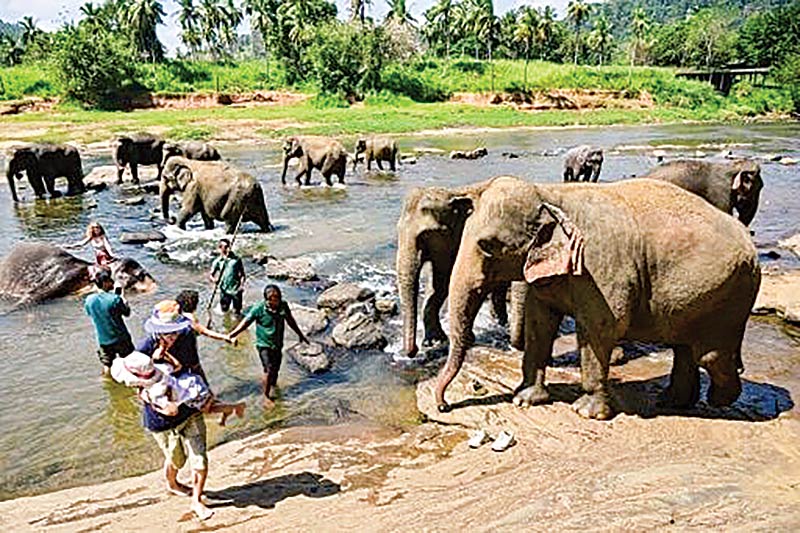
By Amal Jayasinghe
Pics by Ishara Kodikara
Sri Lanka’s main elephant orphanage marked its 50th anniversary on Sunday february 16 with a fruit feast for the 68 jumbos at the showpiece centre, reputedly the world’s first care home for destitute pachyderms. The Pinnawala Elephant Orphanage lavished pineapples, bananas, melons and cucumbers on its residents to celebrate the anniversary of their home, which is a major tourist attraction.
A few officials and tourists invited to the low-key celebration were served milk rice and traditional sweets while four generations of elephants born in captivity frolicked in the nearby Maha Oya river.
“The first birth at this orphanage was in 1984, and since then, there have been a total of 76,” said chief curator Sanjaya Ratnayake, as the elephants returned from their daily river bath.
“This has been a successful breeding programme, and today we have four generations of elephants here, with the youngest 18 months old and the oldest 70 years,” he told AFP.
The orphanage recorded its first twin birth in August 2021 — a rarity among Asian elephants — and both calves are doing well.
Two years before the orphanage was formally established as a government institution in February 1975, five orphaned elephants were cared for at a smaller facility in the southern resort town of Bentota.
“Since the orphanage was set up at Pinnawala in 1975, in a coconut grove, the animals have had more space to roam, with good weather and plenty of food available in the surrounding area,” Ratnayake said.
The home requires 14,500 kilos of coconut and palm tree leaves, along with other foliage, to satisfy the elephants’ voracious appetites.
It also buys tonnes of fruit and milk for the younger calves, who are adored by the foreign and local visitors to the orphanage, located about 90 kilometres (56 miles) east of the capital Colombo.
It is also a major revenue generator for the state, earning millions of dollars a year in entrance fees. Visitors can watch the elephants from a distance or get up close and help scrub them during bath times.
– Tragic toll –
The facility lacked running water and electricity at its inception but things improved as it gained international fame in subsequent years, said retired senior mahout K.G. Sumanabanda, 65.
“I was also fortunate to be present when we had the first birth in captivity,” Sumanabanda told AFP, visiting the home for the jubilee celebrations.
During his career spanning over three decades as a traditional elephant keeper, he trained more than 60 other mahouts and is still consulted by temples and individuals who own domesticated elephants.
Twenty years ago, Sri Lankan authorities opened another elephant home south of the island to care for orphaned, abandoned or injured elephants and later return them back to the wild.
While Pinnawala is seen by many as a success, Sri Lanka is also facing a major human-elephant conflict in areas bordering traditional wildlife sanctuaries.
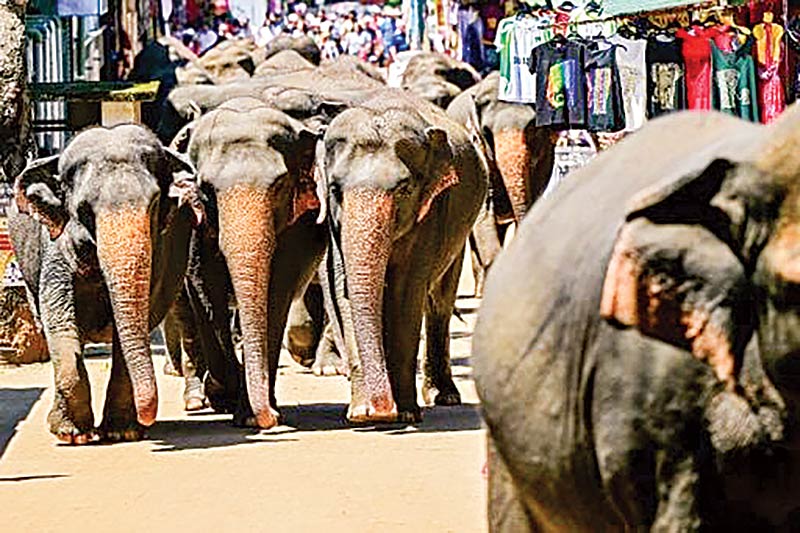
Elephants return to Sri Lanka’s Pinnawala Elephant Orphanage after taking their daily bath in a river
Deputy Minister of Environment Anton Jayakody told AFP on Sunday that 450 elephants and 150 people were killed in clashes in 2023, continuing an alarming trend of fatalities in the human-elephant conflict. The previous year saw 433 elephants and 145 people were killed.
Killing or harming elephants is a criminal offence in Sri Lanka, which has an estimated 7,000 wild elephants and where jumbos are considered a national treasure, partly due to their significance in Buddhist culture.
But the massacre continues as desperate farmers face the brunt of elephants raiding their crops and destroying livelihoods.
The minister was confident the new government could tackle the problem by preventing elephants from crossing into villages.
“We are planning to introduce multiple barriers—these may include electric fences, trenches, or other deterrents—to make it more difficult for wild elephants to stray into villages,” Jayakody told AFP.
Life style
Growing the Cultural Landscape with Suhanya Raffel
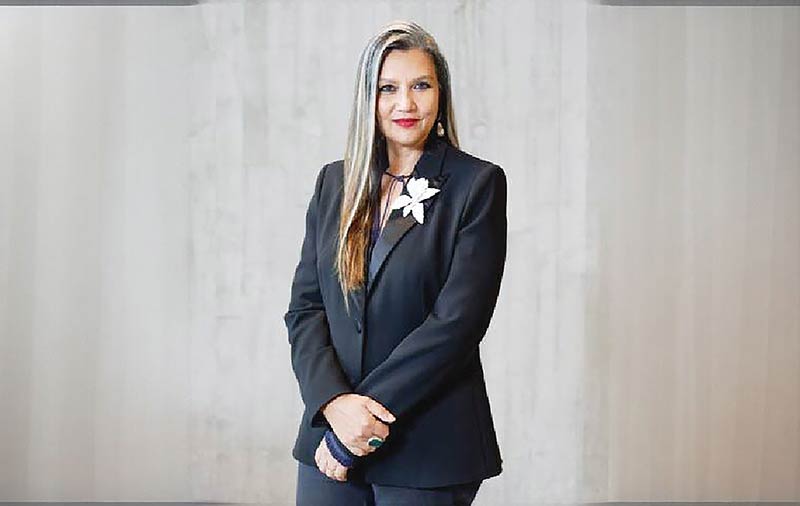
The Geoffrey Bawa Trust which was launched its 2025 is followed by Curatorial Conversations Series. Recently a presentation was made S by M+ Museum director and Geoffrey Bawa Trustee Suhanya Raffel. Speaking at the new Bawa Space on Horton Place, Raffel drew on extensive experience in the museum and art world to present insights and programming from the M+ Museum in Hong Kong. M+ is Asia’s first global museum of contemporary visual culture and presents itself as an intersection of visual art, design and architecture, and the moving image.
The evening presented an opportunity to hear from a leading expert in the museum field and discuss Sri Lanka’s present and future cultural landscape. It also highlighted the role of the Geoffrey Bawa Trust in conserving the legacy of the architect and his collaborators, and promoting contemporary art and design. “There are amazing artists, great designers, and reactive minds in Sri Lanka and the region,” Raffel said at a press event earlier in the afternoon. “There is opportunity in the aspiration to establish things, artists doing very important work, and the energy of individuals to try to make a difference.”
In part, this opportunity stems from the lack of established large-scale infrastructure to conserve Sri Lanka’s modern cultural legacy and support emerging artists. While there is the scope to shape the domestic art world and build institutions reflective of the local cultural community, there are also limitations and challenges in realising this potential.
Raffel spoke extensively about the need to build curatorial skills and knowledge and nurture cultural leaders in the region. Recognising this need, the Geoffrey Bawa Trust maintains public programmes, including exhibitions, residencies, tours, and lectures, to broaden public discourse and knowledge on the built environment and the arts in Sri Lanka and overseas. To fulfil curatorial needs and encourage growth in artistic and cultural institutions such as museums, the Trust employs a dedicated curatorial team and runs a robust internship and training programme. It is hoped that building this skill base will encourage others to explore similar career opportunities and support art, design, and architecture in the region. Sri Lankan visual arts over the past century have enjoyed wide international acclaim. “Sri Lanka is known globally for its creative work,” says Raffel, “it is culturally very strong.”
Geoffrey Bawa is a great example of this global influence. During his lifetime, the architect was very well-known in Sri Lanka and among contemporaries around the world. His structural, landscape, and furniture designs continue to guide and inspire. “It is very important for makers to be seen with their international peers,” Raffel explains. This cultural engagement on regional and international platforms is paramount for ensuring open dialogue and exchange. This means supporting collaborations, encouraging foreign markers to come to Sri Lanka, and exhibiting Sri Lankan work internationally.
The Trust is working to support this global dialogue by hosting installations by artists and makers from Sri Lanka and abroad, as was done in celebration of Geoffrey Bawa’s 100th birthday and again throughout the To Lunuganga programme from 2023-2024. The Trust took Geoffrey Bawa’s work to the world in 2024 with the travelling It is Essential to be There exhibition in Sri Lanka, India, and the United States.
The Trust is proud to be part of major professional international forums such as the International Confederation of Architectural Museums and the Committee for Modern and Contemporary Art Museums, both affiliated with the International Council of Museums. These platforms are vital for global knowledge sharing and advocacy. “We want more of these types of collaborations to happen both with the Geoffrey Bawa Trust, but also other arts and cultural institutions in Sri Lanka,” says Raffel.
In furthering this mission, the Trust is excited to present the new Bawa Space as the organisation’s public face and offer opportunities for the public to engage with the Trust’s work. Located in a recently restored Bawa-designed house from 1959, the Bawa Space doubles as the Geoffrey Bawa Trust headquarters and archives, as well as a new gallery and space for talks and events that will continue year-round.
Life style
Colombo Fashion Week 19-22 February: Two decades of creating the Fashion Eco-system in Sri Lanka

This year CFW will showcase a selection of Emerging Designers alongside established Sri Lankan designers. Adding international flavour will be well known designers from India Suket Dhir, Urvashi Kaur and Zaheer Abbas from Pakistan.
Colombo Fashion Week (CFW), presented by Mastercard, enters its 22nd year in 2025 with its Summer edition, marking another milestone in its journey as one of the four fashion weeks in Asia that have surpassed 2o years.Emerging Designer initiative of CFW this time remains one of its main pillars, providing an entry point for the next generation to pursue design-based entrepreneurship. This in line with the introduction of the Craft Fashion Fund this year is a testament to this commitment. The Craft Fashion Fund will select two winners, one who incorporates batik and another who utilizes crafts other than batik. This initiative passed 20 years.
Over the years, CFW has proven to be the backbone of Sri Lanka’s fashion design industry—its only voice—while creating a fashion ecosystem that provides support to new emerging designers entering the industry. Informally known as South Asian Fashion Week, it serves as a regional hub due to its geopolitical advantage. It is also one of the most significant fashion weeks in South Asia, having played a crucial role in revitalizing the country’s fashion design industry.
This year, Colombo Fashion Week has also expanded its international footprint since joining as a founding member of the newly created BRICS International Fashion Federation. This aligns with CFW’s ongoing mission to bridge diverse fashion markets and foster creative dialogue across continents. As part of this federation, CFW has signed a designer exchange program with BRICS, where a designer from a BRICS country will showcase their work at CFW, and a Sri Lankan designer will present their collection there. CFW continues to play a pivotal role in presenting Sri Lanka through the lenses of arts, culture, and sustainability, further contributing to destination marketing on a global scale.

The Head Table From L to R: Harsha Maduranga, GM – Vision Care, Yatila Wijemanne, Chairman – Juniper, Dr. Vibash Wijeratne, Dirand CEO – Ninewells, Shamara Silva, Mrkt & Media Dir – Unilever, Ruwan Perera, CEO – NDB Wealth, Kamal Munasinghe, Area VP and GM – Cinnamon Grand, Ajai Vir Singh, Founder – CFW, Sandun Hapugoda, Country Mgr – Mastercard, Samrat Datta, GM – Taj Samudra, Bernhard Stefan, MD – Nestlé Lanka, Ramani Fernando, Founder – RF Salons, Arjuna Kumarasinghe, MD -Cargills Food & Beverages
Ajai Vir Singh, Founder, Colombo Fashion Week stated: “Colombo Fashion Week has consistently demonstrated its commitment to developing Sri Lanka’s fashion industry through strategic international partnerships and innovative platforms. Our growing international recognition and expanding designer network reflects vital role this platform plays in positioning Sri Lanka through its creative industries.”
Mastercard, as the presenting partner, continues to champion CFW’s vision of sustainable and inclusive fashion innovation, focusing on digitizing sustainability initiatives and supporting small and medium fashion enterprises.
Sandun Hapugoda, Country Manager, Sri Lanka & Maldives, highlights: “Mastercard is thrilled to partner with Colombo Fashion Week once again, celebrating the incredible talent and creativity within the fashion industry. This partnership aligns perfectly with our commitment to support local artistry. Together, we aim to inspire new possibilities, connect communities, support sustainable fashion initiatives, and elevate the local fashion industry to a global audience, delivering a truly priceless experience. We also anticipate CFW to be a great support to boost the Sri Lanka tourism industry as well.”
The Craft Fashion Fund encourages young designers to engage with and incorporate Sri Lankan crafts into their collections. This approach has been highly successful for designers in other South Asian countries, where traditional crafts have helped establish a unique identity for them. Sri Lankan fashion has its best opportunity to develop a distinct identity when designers integrate local crafts into their work. The developing of this identity has been professed by CFW among the design fraternity, so they are able to create market demand beyond Sri Lanka.
The Emerging Designer initiative of CFW remains one of its main pillars, providing an entry point for the next generation to pursue design-based entrepreneurship. This in line with the introduction of the Craft Fashion Fund this year is a testament to this commitment. The Craft Fashion Fund will select two winners, one who incorporates batik and another who utilizes crafts other than batik. This initiative will support two exceptional designers, ensuring the preservation and evolution of Sri Lanka’s rich artistic heritage. This season, fifteen emerging designers will present their collections, further demonstrating CFW’s dedication to fostering the next generation of fashion talent.
Fazeena Majeed Rajabdeen, Director & CEO, Colombo Fashion Week further added: “Colombo Fashion Week, with its focus on nurturing new talent and emerging designers, has played a pivotal role in reviving and propelling Sri Lanka’s fashion industry. We are proud to present 15 emerging designers this year and to have Sharmila Ruberu mentoring these designers on collection planning. This, along with the Craft Fashion Fund, reiterates our commitment to further the thriving ecosystem we have built, embracing sustainability and empowering young talent.”
Colombo Fashion Week Summer 2025 is set to transform Colombo into an immersive fashion destination by showcasing designers across three of the city’s most prestigious locations. The key partners of Destination Colombo includes Shangri-La, Taj Samudra, and Cinnamon Grand. The shows will feature an impressive roster of international and local talent, including designers from India, Italy and Russia. Renowned creators such as Rimzim Dadu,
Cettina Bucca, Suneet Varma and JJ Valaya, will present alongside celebrated Sri Lankan designers including Fouzul Hameed, Sonali Dharmawardena, Asanka De Mel, Aslam Hussein, Kamil Hewawitharana, Dimuthu Sahabandu, Indi Yapa Abeywardena and Charini Suriyage.
Colombo Fashion Week 2025 is proudly supported by Mastercard, presenting partner along with Shangri-La, Cinnamon Grand, Taj Samudra, NDB Wealth, Yatra, Ninewells Aesthetic Centre, Tresemme, Vaseline, Juniper, Chupa Chups, Nestle-Nescafe, Vision Care, Knuckles, Hameedia, Ramani Fernando, Wijeya Newspapers, Hard Talk, Acorn and Emerging Media.
-

 News5 days ago
News5 days agoCommercial High Court orders AASSL to pay Rs 176 mn for unilateral termination of contract
-
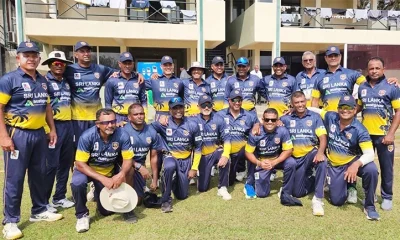
 Sports4 days ago
Sports4 days agoSri Lanka face Australia in Masters World Cup semi-final today
-
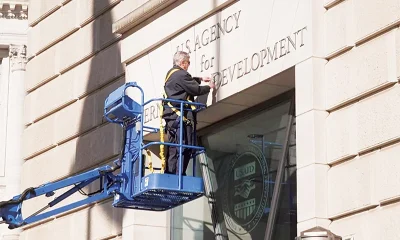
 Features6 days ago
Features6 days agoUSAID and NGOS under siege
-

 Features6 days ago
Features6 days agoDoing it in the Philippines…
-

 Midweek Review5 days ago
Midweek Review5 days agoImpact of US policy shift on Sri Lanka
-

 News4 days ago
News4 days agoCourtroom shooting: Police admit serious security lapses
-
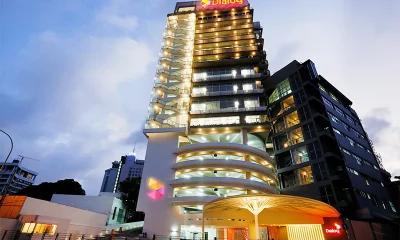
 Business6 days ago
Business6 days agoDialog delivers strong FY 2024 performance with 10% Core Revenue Growth
-
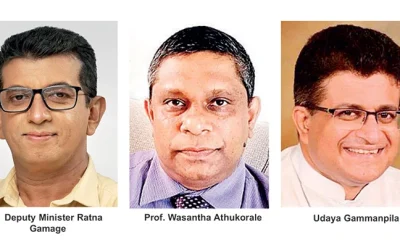
 Business5 days ago
Business5 days agoBudget 2025: A spectrum of reactions and perspectives


